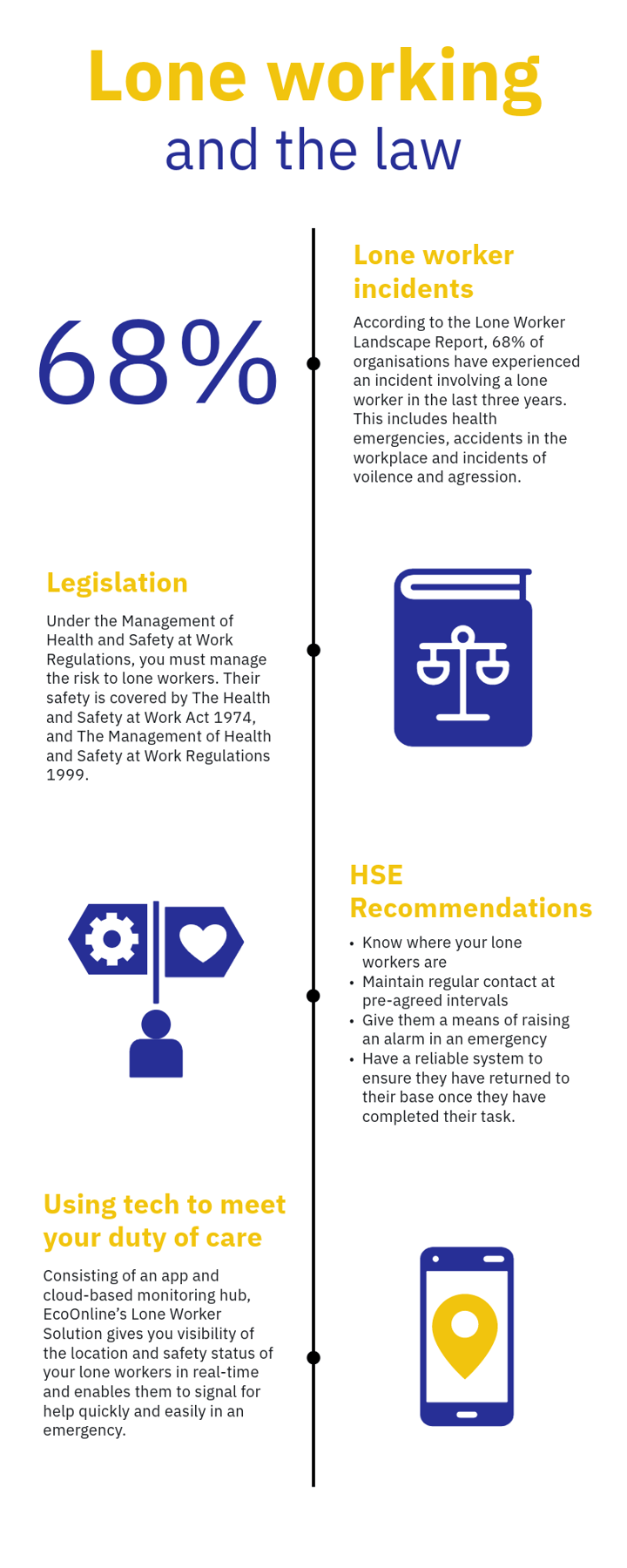Chances are, you have lone workers in some shape or form within your organisation.
Estimates suggest that there are around eight million lone workers in the UK, which is nearly a quarter of the country’s total working population.
To help keep them safe, lone workers are subject to specific guidelines when it comes to health and safety – and for good reason.
According to research, 68% of organisations have experienced an incident involving a lone worker in the last three years.
So, how can you make sure you stay on the right side of lone worker safety regulations?
All workers have a right to work in places where risks to their health and safety are properly controlled
Under the Management of Health and Safety at Work Regulations, you must manage the risk to the lone workers within your organisation.
Their safety is covered by The Health and Safety at Work Act 1974, and The Management of Health and Safety at Work Regulations 1999. Further laws were also introduced in The Corporate Manslaughter and Corporate Homicide Act 2007.
These laws are in place to ensure the safety of all staff, including those who work without supervision.
Because lone working carries additional risk, anyone in your business who works alone for any period – including home workers – should be considered separately in your risk assessments, policies and procedures.
Failure to adhere to health and safety legislation can have serious consequences.
If a lone worker is threatened, attacked or injured at work, legal procedures could cost the business in fines, resources and time, with cases taking months or even years to complete. In some cases, the employer could also face prosecution and imprisonment if they are found to be at fault.

You must manage any health and safety risks before people can work alone.
As an employer, you have a duty of care to ensure that your employees are safe whilst they work, travel, or meet with clients alone or in remote locations.
The HSE recognises that there will always be greater risks for lone workers without direct supervision, or anyone to help them if things go wrong. To help mitigate this, they provide specific guidance on how to keep your lone workers safe.
One of the key recommendations from the HSE is to monitor the well-being of your lone workers and keep in touch with them. This includes;
- knowing where your lone workers are;
- maintaining regular contact at pre-agreed intervals
- having means of raising an alarm in an emergency; and
- a reliable system to ensure a lone worker has returned to their base once they have completed their task
One of the most popular ways to adhere to these requirements is via connected safety solutions such as lone worker apps, which can monitor employee safety in real-time.
Using technology to meet your duty of care
Lone worker safety solutions are fast becoming the number one choice for organisations that need a reliable and efficient way to manage their lone workers’ safety.
StaySafe, EcoOnline’s Lone Worker solution, helps you to comply with HSE guidelines for lone workers.
Consisting of an app and cloud-based monitoring hub, StaySafe gives you real-time visibility of the location and safety status of your lone workers and enables them to signal for help quickly and easily in an emergency.
StaySafe helps you to adhere to HSE guidance, by ensuring that;
- You know where your lone workers are
- You are in regular contact with them
- They can raise the alarm quickly in an emergency; and
- They have returned safely after a period of lone working
